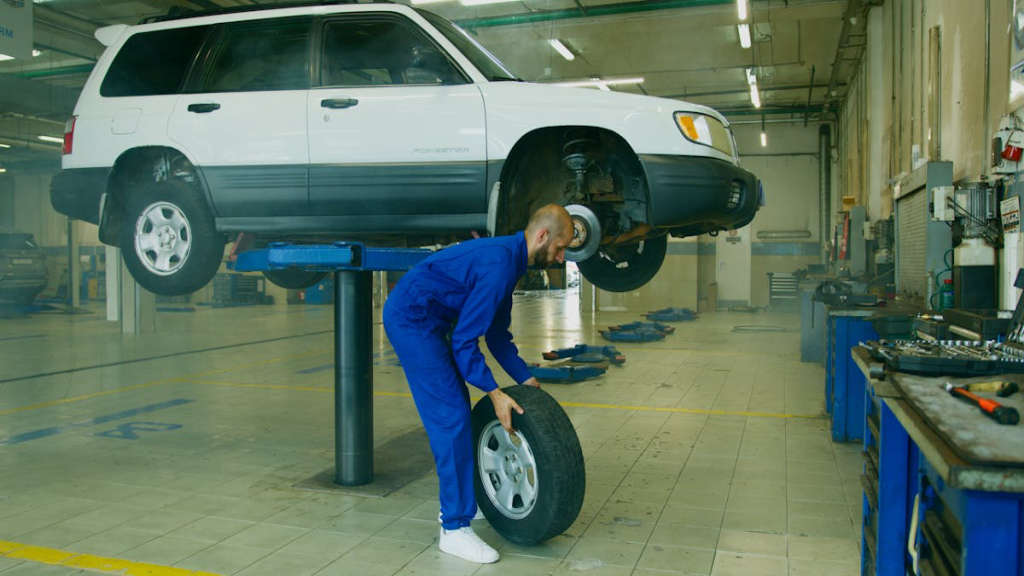
Understanding the intricacies of your Subaru’s systems is essential for maintaining optimal performance. One common issue many Subaru owners face is the tire pressure sensor fault Subaru. This problem not only affects your vehicle’s safety but also its efficiency. Identifying the causes and implementing effective solutions can make your driving experience more enjoyable and worry-free. In this article, we’ll explore the symptoms, diagnoses, and potential fixes for this fault, ensuring you are well-informed and prepared to tackle any issues that may arise.
Main Points
- Identify the symptoms of the tire pressure sensor fault.
- Understand the common causes behind the issue.
- Learn troubleshooting steps and solutions.
- Know when to seek professional help for diagnosis.

The Importance of Tire Pressure Monitoring Systems in Subaru Vehicles
At Subaru, we understand the crucial role of tire pressure monitoring systems in ensuring safety and efficiency. A well-functioning system alerts us to under-inflation, which can lead to poor handling and increased wear. When faced with a tire pressure sensor fault Subaru owners might feel uncertain. However, knowing the signs can save you from bigger issues. Here’s how we can diagnose and fix tire pressure sensor fault Subaru effectively:
- Monitor warning lights: Pay attention to dashboard notifications.
- Check tire pressure: Regularly measure to maintain optimal levels.
- Inspect sensors: Look for damages or disconnections.
By actively engaging with our tire pressure monitoring systems, we enhance both performance and safety on the road.
Common Causes of Tire Pressure Sensor Failures in Subarus
When we talk about tire pressure sensor fault Subaru issues, recognizing the common causes helps us troubleshoot effectively. One prevalent reason is tire damage, which can lead to inconsistent pressure readings. Additionally, sensor battery depletion is another culprit, often overlooked. If you notice the warnings light glowing, it can signify a malfunction. Always remember, faulty wiring or connections can also disrupt sensor function. Thus, regular maintenance and inspection are crucial for optimal performance.
Diagnosing Tire Pressure Sensor Faults: A Step-by-Step Guide
When we encounter issues with our tire pressure sensors, it’s essential to take a systematic approach. We start by checking for visible damage on the sensors themselves. If everything looks good, we move to reset the Subaru tire pressure sensor fault. This often resolves minor glitches. Next, we check the tire pressure with a gauge to ensure the readings match. If discrepancies persist, further investigation might be needed within the vehicle’s monitoring system. Always approach this process with care to maintain safety and vehicle performance.
The Impact of Temperature Changes on Tire Pressure Sensors
Temperature changes play a crucial role in the functionality of tire pressure sensors. As the temperature fluctuates, so does the air pressure inside the tires. This can lead to inaccurate readings, which may cause confusion for drivers. We need to recognize that:
- High temperatures: Can cause air to expand, increasing tire pressure.
- Low temperatures: Cause air to contract, decreasing tire pressure.
- Regular monitoring is essential: Keeping an eye on tire pressure helps maintain safety.
In conclusion, understanding these impacts helps us avoid potential issues and ensures road safety. Don’t underestimate the significance of temperature on your vehicle’s performance!
How to Reset the Tire Pressure Monitoring System in Your Subaru
Resetting the Tire Pressure Monitoring System (TPMS) in your Subaru could seem complex, but it’s quite straightforward. First, check each tire’s pressure and inflate them to the recommended levels. Then, turn on the ignition without starting the engine. Look for the TPMS reset button, typically located beneath the steering wheel. Press it until the TPMS light blinks and turns off. Finally, drive your Subaru for about 10 minutes. This should fully reset the system and ensure it operates correctly.
Preventive Maintenance Tips to Avoid Tire Pressure Sensor Issues
Maintaining our vehicles is crucial to ensure a safe driving experience. One vital aspect we shouldn’t overlook is the tire pressure sensors. First, regular visual inspections can help us identify any potential problems early. Check the tire pressure regularly and adhere to the manufacturer’s recommended levels. Additionally, keep an eye out for warning lights on the dashboard, as they can indicate sensor malfunctions. By being proactive, we can avoid costly repairs and ensure our tires remain in optimal condition.
“An ounce of prevention is worth a pound of cure.” – Benjamin Franklin
Lastly, don’t forget to recalibrate the sensors after tire rotation or replacement. This simple step helps maintain accurate readings. Remember, embracing these preventive maintenance tips not only saves money but also enhances our driving safety and experience.
When to Seek Professional Help for Tire Pressure Sensor Diagnostics
Understanding when to seek professional help for your tire pressure sensor diagnostics can save you time and frustration. We often overlook warning signs, but addressing issues promptly is crucial. Here’s when to reach out to an expert:
- Warning Light Activation: If the warning light remains on despite checking your tire pressure, it’s time to consult a professional.
- Inconsistent Readings: Fluctuating sensor readings may suggest malfunction, indicating you need expert assistance.
- Unexpected Tire Pressure Loss: If tires lose pressure rapidly, get help immediately to avoid safety risks.
By being proactive about sensor diagnostics, we ensure a safer driving experience. Never hesitate to consult a professional when in doubt.
Conclusion
In conclusion, addressing the tire pressure sensor fault in your Subaru is crucial for maintaining both your vehicle’s safety and performance. Understanding the common causes, like sudden temperature changes and faulty sensors, empowers you to take proactive measures. Regularly checking your tire pressure and being vigilant about any warning lights can prevent bigger issues down the road. Moreover, if you notice persistent problems, consulting a professional can save you both time and money. Ultimately, staying informed allows you to tackle this issue confidently, ensuring a smooth ride and peace of mind. Remember, dealing with a tire pressure sensor fault Subaru may seem daunting, but with the right knowledge and care, you can easily manage it.
Frequently Asked Questions
What does a tire pressure sensor fault indicate in a Subaru?
A tire pressure sensor fault indicates that there is an issue with the tire pressure monitoring system (TPMS) in your Subaru, which may prevent it from accurately detecting tire pressure levels.
How can I fix a tire pressure sensor fault in my Subaru?
To fix a tire pressure sensor fault, you can start by checking the tire pressures and ensuring they are correctly inflated. If the fault persists, you may need to reset the TPMS or replace a faulty sensor.
Can I drive my Subaru with a tire pressure sensor fault?
While you can technically drive with a tire pressure sensor fault, it is not advisable as it may lead to undetected low tire pressures, which can cause tire damage or accidents.
How do I reset the tire pressure sensor in my Subaru?
To reset the tire pressure sensor in your Subaru, inflate all tires to the recommended pressure, then start the engine and hold the TPMS reset button until the warning light blinks three times and turns off.
Where can I find the tire pressure sensor in my Subaru?
The tire pressure sensors are typically located inside each tire, attached to the valve stem. They communicate with the TPMS system to provide real-time tire pressure information.
